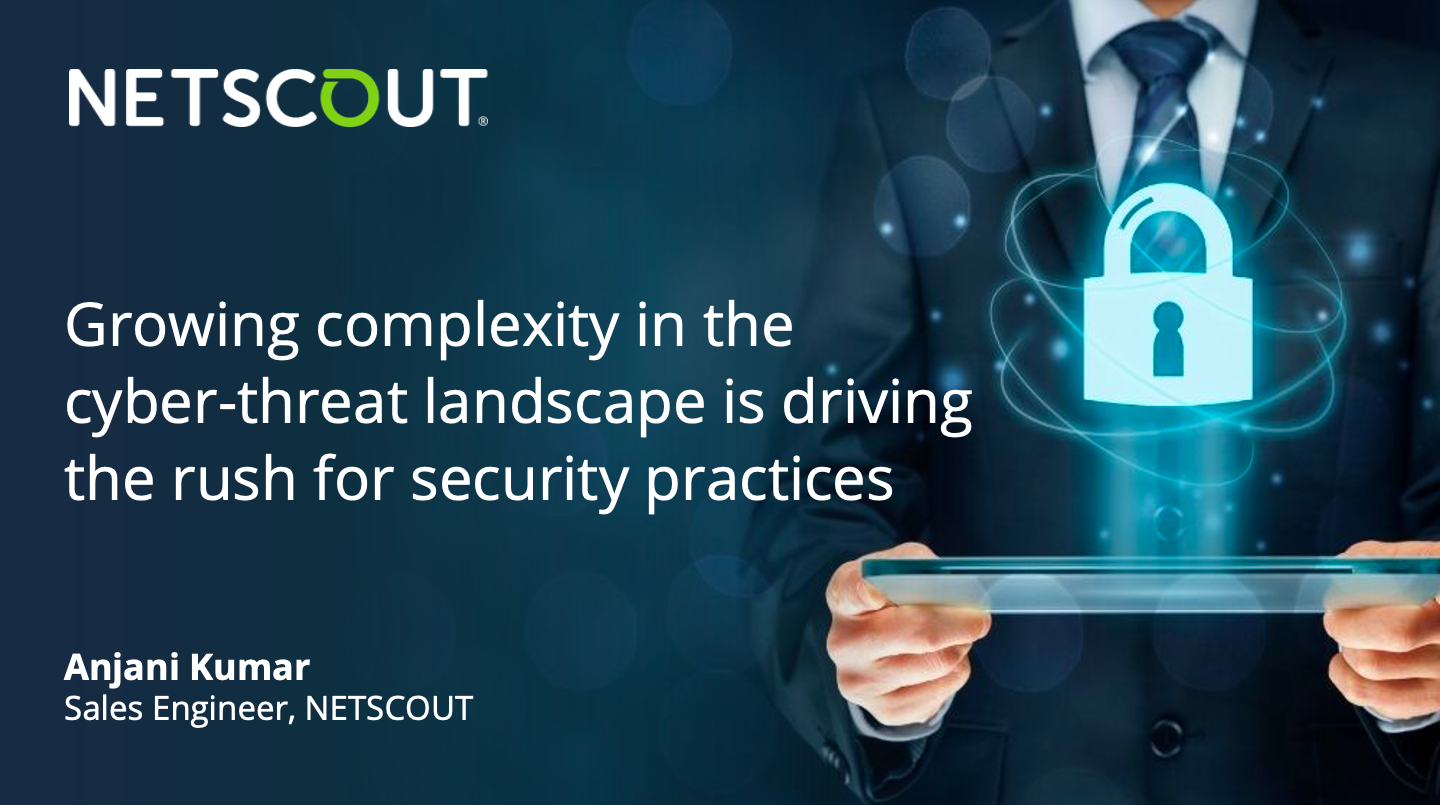Growing complexity in the cyber-threat landscape is driving the rush for security practices - Anjani Kumar, Sales Engineer, NETSCOUT

Mobile devices are becoming both, the new workplace and the entertainment zone with users constantly staying connected to digital networks. The remote working culture is gaining more steam due to the unprecedented pandemic, further adding to reliance on these networks and internet. Organisations across the globe are implementing policies related to work from home and online learning on a huge scale. For smooth functioning of businesses and better business outcomes, critical IT and network infrastructures must be available all the time with easy access remotely to data, applications and internal services. A poor performing infrastructure will have adverse impact leading to loss of productivity, poor customer service and significant reduction in revenues besides being vulnerable to different kinds of cyber-threats. However, the surge in the use of internet and digital networks has led to data breaches and higher security risks too! The security incidents on 4G network is rapidly increasing with more security and privacy threats than the previous networks.
Enterprise networks of today are extremely complex covering physical and virtual offices, public cloud environments and more. The expanding threat surface is increasing the number of cyber-attacks. To add to this, many a time there is lack of comprehensive and consistent network visibility posing a huge challenge for cyber-security teams to put together a threat detection and response strategy. It is also critical for organisations to capture data from various sources or touch-points and apply threat intelligence and business analytics for ensuring a secure network.
Cybersecurity is the new KPI for enterprises
Today, along with the traditional KPIs for reliability, performance and availability, security is considered the new and key addition. In this interconnected world, it is imperative for the deployment of visibility and threat detection capabilities across multivendor, virtualized or containerized network and service infrastructure. Furthermore, the Covid-19 pandemic has also triggered the unprecedented cyber-attacks with cybercriminals succeeding in exploiting new vulnerabilities causing disruption across VPNs, Firewalls and cloud based tools of employees working from home. Malicious attempts are made by attackers to stop legitimate users to access the organisation’s network, freezing operations and causing financial losses and brand damage.
It is all the more critical today to protect our cyber-connected world – networks and devices from the increasing number of attacks. Cyber criminals are increasingly finding different ways to infiltrate into the networks by weaponising new attack vectors, leveraging mobile hotspots and targeting compromised IoT devices. Businesses are alarmed with the complexity, resilience and frequency of cybercrime threats and want unparalleled visibility and insights into the growing threat landscape to address the attacks, appropriately.
Collaboration between network and security teams is critical
Security teams should detect, validate, investigate and respond to threats on an ongoing basis. On the other hand, security is a strategic priority for network teams. Infact the reduction in security risk is among the key measurements of success for network teams, even before service quality, network visibility and end-user experience. Moreover, today’s complex digital infrastructure demands collaboration between network and security teams to gain better clarity on whether an IT service event is a performance issue or a security incident. Their collaboration will bring about cost and operational efficiencies, reduce overall risks and quicken the pace in resolving security incidents.
IT leaders have the responsibility to encourage this collaboration, by providing a transformational view of this exercise across operations and infrastructure. A data store should be built for the usage of both the teams. The right toolset for collaborative workflows should be adopted. This collaboration should also be formalized with documented policies, controls and best practices.
This joint effort by both teams will provide the much required strong foundation to configure and implement a robust cyber-security strategy to protect what is considered as the new gold – data!
It is true, cybercrime has become a multi-billion dollar business and cybercriminals will continue to discover newer techniques to formulate sophisticated or even crude attacks. Only a collaborative effort of all internet community stakeholders – manufacturers of connected devices, network equipment manufacturers, internet service providers, cloud providers, integrators, government agencies, enterprises and cyber-security industry – can help in building a safer cyber-place for all.



